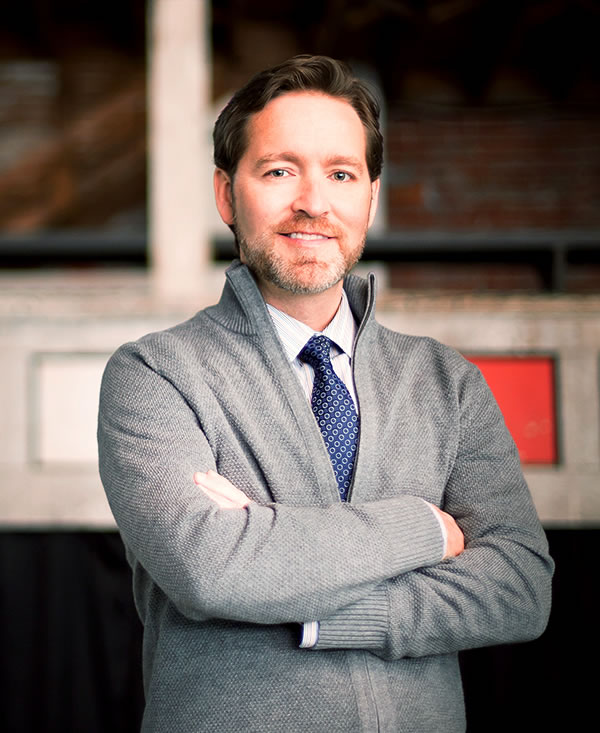Reese Rowland is an Arkansas architect, born and raised. “I’m a native Arkansan from a Western town with 3,000 people. I’m from a farm,” he says matter-of-factly as we begin our conversation. “Growing up like that, sustainability was a necessity.” Today, Rowland is a principal at the respected Little Rock firm Polk Stanley Wilcox Architects. His projects are large and often complex, but in all of them, one thing is clear: sustainable principles drive their design. His is a common-sense philosophy that comes naturally, and he’s more than happy to talk about it.
gb&d: Growing up in Western Arkansas, how did you begin to discover architecture?
Reese Rowland: My grandparents lived on a farm and did many sustainable things all out of necessity. They grew everything. I remember sitting on the southern porch shelling peas and shucking corn. So early on, I started to develop a passion for sustainability. Their farmhouse was built by my great-grandparents back in the 1800s, and it was just good architecture. Its cellar, southern porch, etcetera—it had some very basic technologies that are now called “sustainability.”
I’ve also been around construction my whole life. My dad was a salesman for a local brick company, and my mom was the office manager for a small construction company. I loved to draw—especially simple buildings like barns and structures. I knew I wanted to make money drawing so I decided in high school to become either an architect or an engineer.
gb&d: You’ve never left Arkansas to practice architecture?
Rowland: When I graduated from school in 1990, there were not many jobs in the larger cities on the coasts, so I stayed right here. I stepped right out of school and into design work. After six years, I joined Polk Stanley Wilcox. I was 29. I made partner by 34.

From the Portfolio
Arkansas Studies Institute
The glass fins that define the façade of the award-winning Arkansas Studies Institute in Little Rock, AR, conjure the act of flipping through the pages of a book. The building knits together three previously disparate structures built between 1882 and 2009, the entrance acting as a double wall that’s been pulled outside of the building’s skin, helping to both diffuse sunlight and mitigate solar gain.
gb&d: Polk Stanley Wilcox has one of the most accomplished sustainable project portfolios in Arkansas architecture. Has sustainability always been a top priority?
Rowland: The firm’s philosophy is just good design—light, space, and orientation. Tommy Polk was a great teacher of that. He always capitalized on natural light, which, in Arkansas’s sunny climate, especially feeds into sustainability. Polk Stanley Wilcox helped start the USGBC chapter in Arkansas, and we have the first LEED Gold and LEED Platinum certifications in the state. Our portfolio has a lot of civic and nonprofit work. Those kinds of projects typically allow us to explore new ways of doing sustainability because the buildings are meant to serve a public need. They’re not just there for corporate development.
gb&d: Do you think sustainability in Arkansas is moving in the right direction?
Rowland: Arkansas is typically four to five years behind everybody else economically. But doing a sustainable building here is night-and-day from doing a sustainable building in a place that’s known for sustainability, like the West Coast. It’s a humid, sunny, southern state that’s also cold, wet, and tornadic. But you can capitalize on natural light and local materials here. We have huge pine forests, four types of natural stone, multiple brick manufacturers, and innovative products like soy-based insulation.
gb&d: Are there aspects of sustainability that shouldn’t go unnoticed?
Rowland: Yes. In every project, you have to tell the proper story, make that story accessible to everybody, and make that story count. Do that, and you’ll make what is right and sustainable for every project. You’ll make good architecture.

